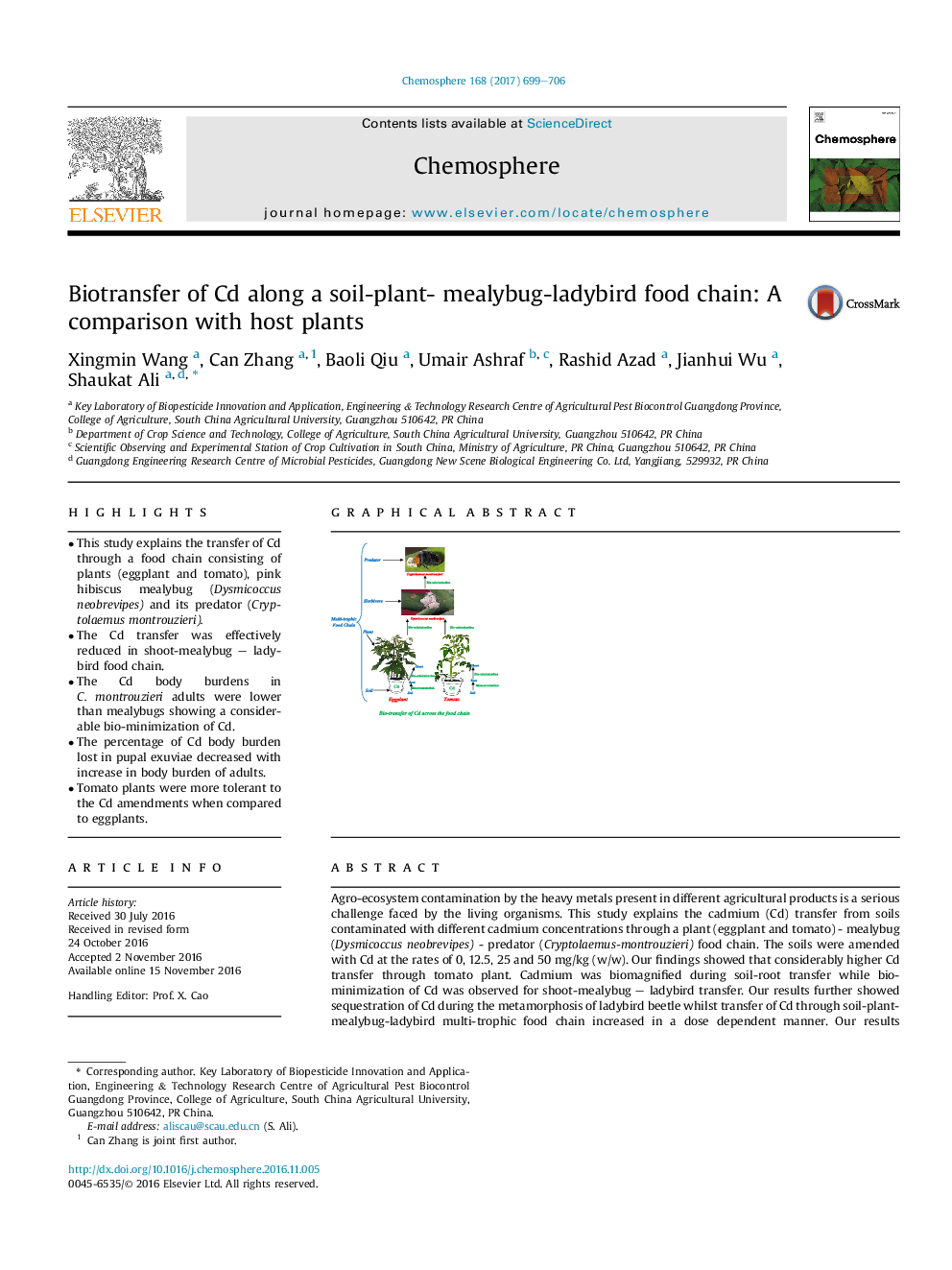| Article ID | Journal | Published Year | Pages | File Type |
|---|---|---|---|---|
| 5746675 | Chemosphere | 2017 | 8 Pages |
â¢This study explains the transfer of Cd through a food chain consisting of plants (eggplant and tomato), pink hibiscus mealybug (Dysmicoccus neobrevipes) and its predator (Cryptolaemus montrouzieri).â¢The Cd transfer was effectively reduced in shoot-mealybug - ladybird food chain.â¢The Cd body burdens in C. montrouzieri adults were lower than mealybugs showing a considerable bio-minimization of Cd.â¢The percentage of Cd body burden lost in pupal exuviae decreased with increase in body burden of adults.â¢Tomato plants were more tolerant to the Cd amendments when compared to eggplants.
Agro-ecosystem contamination by the heavy metals present in different agricultural products is a serious challenge faced by the living organisms. This study explains the cadmium (Cd) transfer from soils contaminated with different cadmium concentrations through a plant (eggplant and tomato) - mealybug (Dysmicoccus neobrevipes) - predator (Cryptolaemus-montrouzieri) food chain. The soils were amended with Cd at the rates of 0, 12.5, 25 and 50Â mg/kg (w/w). Our findings showed that considerably higher Cd transfer through tomato plant. Cadmium was biomagnified during soil-root transfer while bio-minimization of Cd was observed for shoot-mealybug - ladybird transfer. Our results further showed sequestration of Cd during the metamorphosis of ladybird beetle whilst transfer of Cd through soil-plant-mealybug-ladybird multi-trophic food chain increased in a dose dependent manner. Our results emphasize the need of further studies to elaborate possible mechanisms of Cd bio-minimization by plants, mealybugs and ladybirds observed during this study.
Graphical abstractDownload high-res image (211KB)Download full-size image
